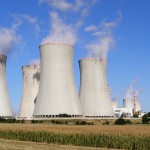 Natural gas fell on Wednesday before government data likely shows tomorrow that US inventories rose last week, while weather forecasts continued to call for mild weather across most of the country well into the third week of April.
Natural gas fell on Wednesday before government data likely shows tomorrow that US inventories rose last week, while weather forecasts continued to call for mild weather across most of the country well into the third week of April.
Natural gas for delivery in May traded 1.79% lower at $2.632 per mBtu at 9:20 GMT, shifting in a daily range of $2.669-$2.630. The contract gained 1.13% on Tuesday to $2.680 after it tumbled 2.32% the prior session.
According to NatGasWeather.com, natural gas demand in the US will be low compared to normal through April 14th, with a slightly cooler weather trend for the Interior West and Plains over the following seven days, while the East remains mild.
Warmer readings will gradually establish over the southern and eastern US as the current week progresses. A weather system with showers and thunderstorms will track through the eastern US today, while a stalled cold front accumulates snowfall near the Canadian border. A cooler weather system will pass through the Great Lakes and Northeast on Friday and Saturday, while the intermountain West will see chilly weather with rain and snow as systems track from the Pacific Ocean. Despite the active weather systems, however, temperatures nationwide will remain mild.
Active weather will persist across the US during the third week of April but temperatures will remain mild as northern systems fail to tap any truly cold Canadian air. The southern and eastern US will enjoy near or somewhat warmer-than-usual weather, while the West and Plains are slightly cooler due to Pacific systems with rain and snow.
“Without any truly frigid Canadian air spilling into the US over the next several weeks, heating demand will be mainly light, providing opportunity for supplies to make up ground on deficits in larger chunks after the next two weekly EIA reports,” NatGasWeather.com said in a note to clients.
Thursday’s stockpiles report by the Energy Information Administration will likely bring an inventory build of around 15 bcf instead of an average decline due to last week’s seasonal and slightly warmer conditions. The five-year average inventory drop for the seven days ended April 3rd is -2 billion cubic feet, while stockpiles declined by 8 bcf during the comparable period a year earlier.
The following report, due on April 16th, will probably register a slightly larger than average build due to this week’s widespread mild conditions. The five-year average inventory gain for the week ended April 10th is +35 billion cubic feet, while supplies rose by 22 bcf during the same week a year earlier.
The government agency said last Thursday that US natural gas stockpiles fell by 18 billion cubic feet during the seven days ended March 27th, exceeding analysts’ consensus estimate of -10 bcf. Total gas held in US hubs amounted to 1.461 trillion cubic feet, narrowing a deficit to the five-year average inventories of 1.651 trillion by only 0.1% from a week earlier to 11.5%.
Readings
According to AccuWeather.com, New York will see temperatures peak at 45 degrees Fahrenheit today and tomorrow, 14 below usual, before reestablishing in the low-mid 60s afterwards. Readings in Chicago will max out at 70 degrees on April 10th, 13 above normal, but will otherwise hover near the upper 50s and lower 60s through April 17th.
Down South, the high in Houston on April 9-10th will be 86 degrees Fahrenheit, 8 above usual, and readings will be in the low 80s through April 18th. Los Angeles will see the mercury peak at 70-71 degrees over the coming days, compared to the average 72, before jumping at 77-79 degrees on April 14-15th.
Pivot points
According to Binary Tribune’s daily analysis, May natural gas futures’ central pivot point stands at $2.679. In case the contract penetrates the first resistance level at $2.710 per million British thermal units, it will encounter next resistance at $2.741. If breached, upside movement may attempt to advance to $2.772 per mBtu.
If the energy source drops below its S1 level at $2.648 per mBtu, it will next see support at $2.617. In case the second key support zone is breached, the power-station fuel’s downward movement may extend to $2.586 per mBtu.
In weekly terms, the central pivot point is at $2.672. The three key resistance levels are as follows: R1 – $2.760, R2 – $2.808, R3 – $2.896. The three key support levels are: S1 – $2.624, S2 – $2.536, S3 – $2.488.





